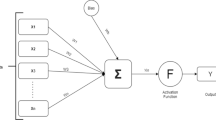Abstract
Acute coronary syndrome (ACS) is a serious condition arising from an imbalance of supply and demand to meet myocardium’s metabolic needs. Patients typically present with retrosternal chest pain radiating to neck and left arm. Electrocardiography (ECG) and laboratory tests are used indiagnosis. However in emergency departments, there are some difficulties for physicians to decide whether hospitalizing, following up or discharging the patient. The aim of the study is to diagnose ACS and helping the physician with his decisionto discharge or to hospitalizevia machine learning techniques such as support vector machine (SVM) by using patient data including age, sex, risk factors, and cardiac enzymes (CK-MB, Troponin I) of patients presenting to emergency department with chest pain. Clinical, laboratory, and imaging data of 228 patients presenting to emergency department with chest pain were reviewedand the performance of support vector machine. Four different methods (Support vector machine (SVM), Artificial neural network (ANN), Naïve Bayes and Logistic Regression) were tested and the results of SVM which has the highest accuracy is reported. Among 228 patients aged 19 to 91 years who were included in the study, 99 (43.4 %) were qualified as ACS, while 129 (56.5 %) had no ACS. The classification model using SVM attained a 99.13 % classification success. The present study showed a 99.13 % classification success for ACS diagnosis attained by Support Vector Machine. This study showed that machine learning techniques may help emergency department staff make decisions by rapidly producing relevant data.

Similar content being viewed by others
References
Nichols, M., Townsend, N., Scarborough, P., and Rayner, M., Cardiovascular Disease İn Europe: Epidemiological Update. Eur. Heart J. 34(39):3028–3034, 2013.
Chen, S. Y., Crivera, C., Stokes, M., Boulanger, L., and Schein, J., Clinical And Economic Outcomes Among Hospitalized Patients With Acute Coronary Syndrome: An Analysis Of A National Representative Medicare Population. Clinicoeconomics And Outcomes Research: Ceor 5:181, 2013.
Kurz, M. C., Mattu, A., and Brady, W. J., Acute Coronary Syndrome. Rosen’s Emergency Medicine Chapter 78, 997-1033.E5, Elsevier, 2014.
Mozaffarian, D., Benjamin, E. J., Go, A. S., Arnett, D. K., Blaha, M. J., Cushman, M., and Huffman, M. D., Heart Disease And Stroke Statistics-2015 Update: A Report From The American Heart Association. Circulation 131(4):E29, 2015.
Roffi, Marco, Et Al. (2015) Esc guidelines for the management of acute coronary syndromes in patients presenting without persistent st-segment elevation. European Heart J. Ehv320.
Roger, V., et al., Aha Statistical Update. Heart Disease And Stroke Statistics—2011 Update. A Report From The American Heart Association. Circulation 123:18–209, 2011.
Amsterdam, E. A., Wenger, N. K., Brindis, R. G., Casey, D. E., Ganiats, T. G., Holmes, D. R., and Levine, G. N., 2014 Aha/Acc Guideline For The Management Of Patients With Non–St-Elevation Acute Coronary Syndromes: A Report Of The American College Of Cardiology/American Heart Association Task Force On Practice Guidelines. Journal Of The American College Of Cardiology 64(24):E139–E228, 2014.
Goldman, L., Cook, E. F., Brand, D. A., Lee, T. H., Rouan, G. W., Weisberg, M. C., and Gottlieb, L., A Computer Protocol To Predict Myocardial İnfarction İn Emergency Department Patients With Chest Pain. New England Journal Of Medicine 318(13):797–803, 1988.
Cruz, J. A., and Wishart, D. S., Applications Of Machine Learning İn Cancer Prediction And Prognosis. Cancer Informat. 2:59, 2006.
Scırıca, B. M., Acute Coronary Syndromeemerging Tools For Diagnosis And Risk Assessment. Journal Of The American College Of Cardiology 55(14):1403–1415, 2010.
Hsieh, S. L., Hsieh, S. H., Cheng, P. H., Chen, C. H., Hsu, K. P., Lee, I. S., et al., Design Ensemble Machine Learning Model For Breast Cancer Diagnosis. J. Med. Syst. 36:2841–2847, 2012.
Martis, R. J., Krishnan, M. M. R., Chakraborty, C., Pal, S., Sarkar, D., et al., Automated Screening Of Arrhythmia Using Wavelet Based Machine Learning Techniques. J. Med. Syst. 36:677–688, 2012.
Xie, J., and Wangc, C., Using Support Vector Machines With A Novel Hybrid Feature Selection Method For Diagnosis Of Erythemato-Squamous Diseases. Expert Systems With Applications 38:5809–5815, 2011.
Ohmann, C., Moustakis, V., Yang, Q., and Lang, K., Evaluation Of Automatic Knowledge Acquisition Techniques İn The Diagnosis Of Acute Abdominal Pain. Artificial Intelligence İn Medicine 8:23–36, 1996.
Aj, S., and Schölkopf, B., A Tutorial On Support Vector Regression. Neurocolt Technical Report 14(3):199–222, 2004.
Akay, D., and Toksarı, M. D., Ant Colony Optimization Approach For Classification Of Occupational Low Back Disorder Risks. Human Factors And Ergonomics İn Manufacturing 19(1):1–14, 2009.
Green, M., Björk, J., Forberg, J., Ekelund, U., et al., Comparison Between Neural Networks And Multiple Logistic Regression To Predict Acute Coronary Syndrome İn The Emergency Room. Artificial İntelligence İn Medicine 38(3):305–318, 2006.
Conforti, D., and Guido, R., Kernel-Based Support Vector Machine Classifiers For Early Detection Of Myocardial İnfarction. Optimization Methods And Software 20(2-3):401–413, 2005.
Abe, S., (2005). Support vector machines for pattern classification, 2nd Edn, Springer
Ha, S. H., and Joo, S. H., A Hybrid Data Mining Method For The Medical Classification Of Chest Pain. International Journal Of Computer And Information Engineering 4(1):33–38, 2010.
Ghumbre, S., Patil, C., & Ghatol, A. (2011). Heart disease diagnosis using support vector machine. In International Conference On Computer Science And İnformation Technology (Iccsıt’) Pattaya
Vadicherla, D., and Sonawane, S., Classification Of Heart Disease Using Svm And Ann. Ijrcct 2(9):693–701, 2013.
Chitra, R., and Seenivasagam, V., Heart Disease Prediction System Using Supervised Learning Classifier. Bonfring International Journal Of Software Engineering And Soft Computing 3(1):01–07, 2013.
Author information
Authors and Affiliations
Corresponding author
Ethics declarations
Conflicts of Interest
This study has no conflict of interest.
Additional information
This article is part of the Topical Collection on Transactional Processing Systems
Rights and permissions
About this article
Cite this article
Berikol, G.B., Yildiz, O. & Özcan, İ.T. Diagnosis of Acute Coronary Syndrome with a Support Vector Machine. J Med Syst 40, 84 (2016). https://doi.org/10.1007/s10916-016-0432-6
Received:
Accepted:
Published:
DOI: https://doi.org/10.1007/s10916-016-0432-6




